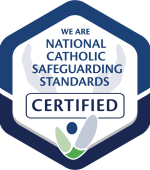Home » Indicators of abuse and neglect of children
The presence of indicators of abuse does not prove a child or vulnerable adult has been or is being abused.
Indicators of abuse provide guidance on possible concerns and potential causal relationships. They should act as a trigger, encouraging people to consider whether an injury, behaviour or disclosure raises the possibility that a child may be at risk of significant harm from abuse or neglect.
Some indicators are sufficient as single signs to prompt you to make a report to relevant authorities. Others are meaningful when they co-exist with a range of indicators.
The absence of indicators does not necessarily mean a child is safe. Some maltreated children will not display any noticeable symptoms. Equally, many of the indicators listed may be the consequence of other factors aside from abusive or neglectful care.
Children who have experienced abuse will often experience more than one type of maltreatment. For example, there is a strong propensity for sexual abuse to co-exist with psychological or emotional abuse.
Indicators of abuse need to be considered in the context of a child’s circumstances and other vulnerabilities. For example, a child suffering from hemophilia will likely suffer more frequent and serious bruising than other children. In this instance the bruising does not indicate physical abuse, but questions of adequate medical treatment and general care may arise.
Interpretation of indicators always involves adopting the child’s perspective and having the individual at the centre of consideration. The focus is on the possible consequences of the actions or inactions of the child’s parents, carers or other responsible persons.
It is important to discuss your concerns for a child with a person experienced with and trained in interpreting the indicators of abuse. As a diocesan worker or member of our faith communities, or parent or carer of a child in receipt of a diocesan service, you are able to contact the Office of Safeguarding to discuss your child-related concerns:
P: 4979 1390 (Mon-Fri, 9am-5pm)
E: childprotection@mn.catholic.org.au
The Catholic Church and the wider Australian society recognise that all children are entitled to greater care and protection than adults. However, as with vulnerable persons, there are circumstances that affect some children that increases their vulnerability to being abused. These include but are not limited to:
Some Aboriginal and Torres Straight Islander (ATSI) communities are severely affected by multiple environmental risk factors stemming from generational marginalisation, disenfranchisement and poverty. Further, generations of ATSI children were disproportionally subject to statutory care, including attempts to forcefully assimilate (Stolen Generation).
Members of recent émigré communities to Australia suffer similar challenges, particularly those who are non European, have few financial means, are fleeing civil strife and war at home and who do not speak English or have English as a second language.
The following section provides detailed information on the indicators of child abuse from the five classifications generally used to describe the consequences of the harmful behaviour inflicted on children. Each classification has detailed information available to you when you expand the relevant subheading listed below.
Indicators in children:
Indicators in parents or carers:
Indicators in children:
Indicators in parents or caregiver:
General indicators of female genital mutilation (FGM):
Indicators in children:
Note: Arguably children sustain psychological harm from all types of abuse.
Indicators in parents or carers:
General indicators a child could be at risk of forced marriage:
Indicators in children:
General indicators of child’s stress should be considered such as:
Indicators in parents, carers, siblings, relatives, acquaintances or strangers:
Offenders use a range of tactics including force, threats and tricks to engage children in sexual contact, and to then silence them. They may also try to gain the trust and friendship of parents in order to obtain access to children.
Indicators in children:
Indicators in adult victims:
Indicators in adult perpetrator:
Office:
50 Crebert St, Mayfield
PO Box 152, Mayfield NSW 2304
P: 02 4979 1390
E: childprotection@mn.catholic.
www.officeofsafeguarding.org.au
